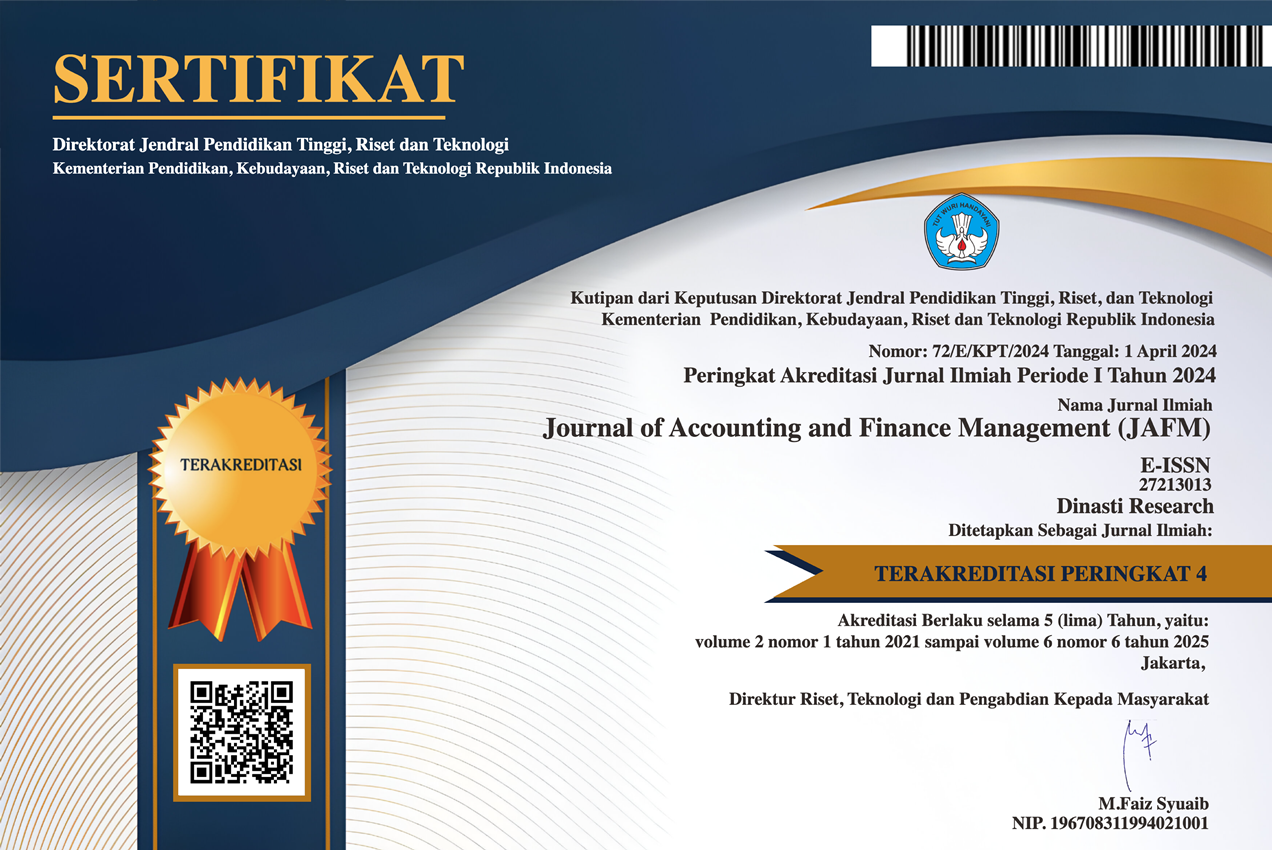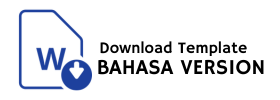Analisis Efisiensi Keuntungan Alternatif Perbankan Indonesia Sebelum Pandemi Covid Dengan Menggunakan Metode Distribution Free Approach (DFA)
DOI:
https://doi.org/10.38035/jafm.v6i1.1585Keywords:
Metode Distribution Free Approach (DFA), Efisiensi Keuntungan Alternatif Perbankan, Pandemi CovidAbstract
Penelitian ini menganalisis efisiensi keuntungan alternatif bank umum konvensional selama periode 2017 – 2019 menggunakan metode Distribution Free Approach (DFA). Metode ini dipilih karena fleksibilitasnya dalam mengukur efisiensi tanpa asumsi distribusi tertentu pada komponen error. Hasil menunjukkan rendahnya Nilai rata-rata efisiensi keuntungan alternatif senilai 0,264 atau 26.40 persen. Faktor seperti skala ekonomi, regulasi pemerintah, harga input, Jumlah output, Kuantitas fixed netputs dan NPL berkontribusi signifikan terhadap efisiensi keuntungan alternatif. Hasil ini dapat memberikan rekomendasi untuk meningkatkan keuntungan dengan memanfaatkan keuntungan yang ada.
References
Aeni, S. N. (2022, Februari 21). Pandemi Covid-19 dan dampaknya terhadap ekonomi. http://www.katadata.co.id
Allen N. Berger, W. C. (1993). The efficiency of financial institutions:A review and preview of research past, present, and future. WS: Journal of Banking and Finance 17:221-249.
Berger, A. N., & Mester, L. J. (1997). Inside the Black BOX: What Explains Differences in the Efficiencies of Financial Institutions. Forthmrning, Jourml of Banking and Finance, Vol. 21, 1997.
Caroline, A. I. (2021). BANK DAN LEMBAGA KEUANGAN LAINNYA. Penerbit Insania.
Coelli, T., Rao, D. S., & Batlese, G. E. (1998). AN INTRODUCTION TO EFFICIENCY AND PRODUCTIVITY ANALYSIS. Springer Science+Business " Media, LLC.
Farchah, N., & Kusmargiani, I. S. (2020). ANALISIS EFISIENSI BANK UMUM KONVENSIONAL DI INDONESIA MENGGUNAKAN METODE DATA EVELOPMENT ANALYSIS (DEA) PADA TAHUN 2014-2018. keunis Majalah Ilmiah – ISSN No 2302-9315 Vol. 8 No 1 Thn VIII.
Farrel, M. (1957). The Measurement of Productive Efficiency.
Hadad, M. D., Santoso, W., Mardanugraha, E., & Illyas, D. (2003). Pendekatan Parametrik Untuk Efisiensi Perbankan Indonesia; https://www.bi.go.id/id/publikasi/.
Herta, S. d. (2017). ANALISIS EFISIENSI INDUSTRI PERBANKAN INDONESIA DENGAN MENGGUNAKAN METODE PARAMETRIK: DISTRIBUTION FREE APPROACH. MIX: Jurnal Ilmiah Manajemen, Volume VII, No. 1,.
Katadata.co.id. (2019, Agustus). Pertumbuhan Kredit Melambat pada Juni 2019.
OJK, H. (2020, Maret 25). Restrukturisasi Kredit/Pembiayaan terkait Dampak COVID-19.
OJK, H. (2019). Laporan Profil Industri Perbankan
OJK, H. (2022). Laporan Profil Industri Perbankan
Rahadian, A. H. (2020). KAJIAN ANALISIS EFISIENSI INDUSTRI PERBANKAN INDONESIA MENGGUNAKAN METODE DISTRIBUTION FREE APPROACH.
Sealey, C. a. (1977). Inputs, Outputs, and the Theory of Production and Cost of Depository Financial Institutions. Journal of Finance .
Sumarto, S. d. (2017). ANALISIS EFISIENSI INDUSTRI PERBANKAN INDONESIA DENGAN MENGGUNAKAN METODE PARAMETRIK: DISTRIBUTION FREE APPROACH. MIX: Jurnal Ilmiah Manajemen, Volume VII, No. 1,.
Widowati, H. (2019, Agustus 26). Pertumbuhan Kredit Melambat pada Juni 2019 http://www.Katadata.co.id.
Downloads
Published
How to Cite
Issue
Section
License
Copyright (c) 2025 Nurliyanti Nurliyanti, Agus Herta Sumarto

This work is licensed under a Creative Commons Attribution 4.0 International License.
Authors who publish their manuscripts in this journal agree to the following conditions:
- The copyright on each article belongs to the author(s).
- The author acknowledges that the Journal of Accounting and Finance Management (JAFM) has the right to be the first to publish with a Creative Commons Attribution 4.0 International license (Attribution 4.0 International (CC BY 4.0).
- Authors can submit articles separately, arrange for the non-exclusive distribution of manuscripts that have been published in this journal into other versions (e.g., sent to the author's institutional repository, publication into books, etc.), by acknowledging that the manuscript has been published for the first time in the Journal of Accounting and Finance Management (JAFM).



























